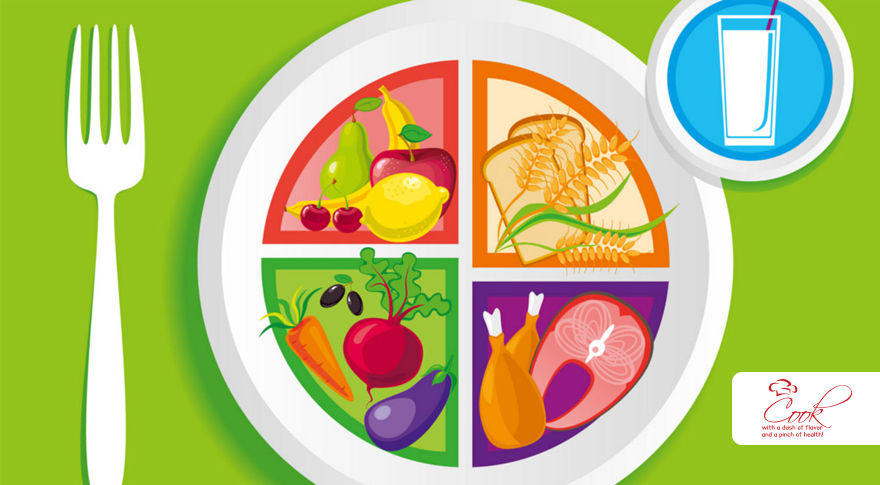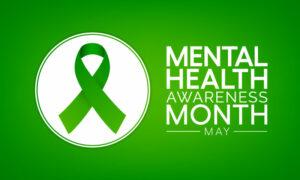Dietary Guidelines provide evidence-based information to promote preventive health measures for Americans and reduce chronic diseases through diet and physical activity. These guidelines focus on Healthy Americans ages 2 and older. However, the most recently released guidelines from 2010 are intended not only for healthy individuals, but also for those at increased risk of preventable chronic diseases as a result of poor diet and lack of physical activity. The South Asian community, now living in America, is also at a higher risk of chronic diseases due to inherent susceptibilities to certain health concerns such as central obesity (belly fat) and diabetes.
This article summarizes some of the key recommendations of the 2010 Dietary Guidelines and how to include these recommendations in your daily lives. It provides specific information on reducing sodium, solid fats (saturated and trans-fats), cholesterol, added sugars and refined grains, along with recommendations on increasing dietary fiber, whole grain, potassium, calcium and Vitamin D.
Sodium
“Pass the salt, please.” We hear it all the time. What this statement should really say is “please, pass on the salt!” Reducing our salt intake is critical. Sodium is the main part of table salt, and its chemical name is sodium chloride. Sodium is important for water balance in our bodies, but too much of it can be very dangerous. High sodium intake is related to high blood pressure, which can then result in other chronic diseases such as heart diseases and kidney disease, all of which are growing problems in our community. The recommendations for sodium intake have been reduced to less than 2300 mg per day and further to 1500 mg for individuals 51 years and older, as well as for those with known heart related problems. This translates to approximately half to one teaspoon of salt per day. This amount includes salt/sodium in processed food, cooking and table salt. One way to help reduce salt intake is to experiment with different herbs, spices, and natural flavorings such as lemon juice, to enhance the flavor of your favorite dish. You’d be surprised what miracles a good blend of herbs and spices can do to your food; over time, you will get used to the change in flavors making it a permanent habit. Because salt and/or sodium works as a preservative to keep food fresh, large quantities are used in canned products, deli meats, dressings, achaar and marinated or processed meats, including fish and poultry. Next time you’re at the grocery store, make sure to read nutrition labels and choose lower sodium options. When eating out, be cautious of the amount of sodium in food and be mindful of hidden sodium such as in MSG (also known as monosodium glutamate or Ajinomoto).
Solid Fats/Cholesterol
Deep-fried foods, bakery sweets and certain snacks may be delicious, but they come with a price! These foods contain saturated and/or trans-fats. Saturated fats generally come from animal source and are solid at room temperature, such as those found in meat, poultry, butter and ghee. Trans-fats are fats that are chemically altered to convert a liquid fat into solid such as those found in margarine sticks and vegetable shortening commonly used in baked products. In contrast, soft margarines, such as those found in tubs or squeeze bottles are better options as they are less hydrogenated. The term “hydrogenated” oil in the ingredient line of a product is a good indicator of whether it contains trans-fats. Both saturated and trans-fats can cause heart diseases if eaten in excessive amounts. It is recommended that saturated fats should not exceed 7-10% of total calories and trans-fats should be consumed as little as possible.
High blood cholesterol level is another risk factor for heart disease. Cholesterol is produced in the liver and only comes from animal sources such as meat, poultry, dairy and eggs. Our body is able to produce the cholesterol it needs to maintain essential body functions so dietary cholesterol is not needed. The recommended daily cholesterol intake is less than 200 – 300mg.
The purpose of lowering solid fats and cholesterol in our diet is to maximize our health. Choose liquid oil or cooking oil spray in place of solid fats such as butter and hard margarine. Avoid foods with “hydrogenated” oils in the ingredients and enjoy low-fat dairy products, lean meat, poultry and fish, as well as vegetable sources of proteins such as lentils, legumes and soy-based products.
Added Sugar
Although many foods, such as milk, fruits and certain vegetables, have naturally occurring sugars, it is the added sugars that are more of a concern. The consumption of added sugars such as those found in sweetened beverages, including sodas and sweetened fruit, energy, and sports drinks, may contribute to weight gain especially if they increase your caloric intake above your required amount. Added sugars can be in the form of white/brown sugar, fructose, glucose, sucrose, high fructose corn syrup, corn syrup, honey and molasses (gur), just to name a few. Currently, nutrition labels do not separately list added sugar so it is difficult to determine if some or all of the sugar in the product is naturally present or if it has been added. For example, 1 cup of milk has 12 grams of sugar, but this is naturally occurring sugar, not added sugar. Having foods with added sugar can also prevent you from eating more nutrientdense foods (foods with more beneficial nutrients that maybe lower in calories). To reduce the number of calories that do not provide adequate amounts of beneficial nutrients, drink water as your choice for beverage; also avoid diet soda, as it may not provide additional calories, but can still displace the intake of other nutritious foods. If you drink juice, then limit the quantity to 6-8 oz. per day and make sure it is 100% juice and not a juice-flavored drink. Reduce the amount of sugar that you add in your tea and coffee as every teaspoon adds extra calories. If you choose to have a dessert, enjoy it in small portions or share it. Desserts are not only high in added sugars, but can also be high in solid fats resulting in additional non-nutritive caloric intake.
Dietary Fiber: Increase Whole Grains and Decrease Refined Grains
Should you eat wheat bread, multigrain bread, or whole-wheat bread? While wheat bread and multigrain products may contain wheat and other grains, they may not be whole grain. “Made with whole grains” is also not the same as “100% whole grain.” To know if a product is “whole grain,” look for “whole grain” or “whole” and the name of the grain (for example “whole-wheat”) as the first ingredient in the product. There are some key differences between whole grain and refined grain. Refined grain is grain that is hulled and processed during which many important nutrients are lost, including fiber. Whole grain has all its original nutrients, including “hidden” nutrients and fiber. Whole grain and fiber are important not only for a healthy bowel and regularity, but may also prevent or control heart diseases, diabetes, and certain cancers. Fiber also provides the feeling of fullness, therefore increasing fiber can help limit the total amount of food you eat. Look for at least 3-5 grams of fiber when reading labels. Some fiber and nutrient-rich foods include legumes, lentils, whole-grain cereals, as well as fruits and vegetables. Start your morning with a bowl of old-fashioned oatmeal flavored with cinnamon and add a fruit; enjoy whole-wheat crackers or some popcorn to get whole grains into your snacks. Whole-wheat roti with chana daal for dinner and some berries for dessert are excellent ways to get the fiber, protein, and many other beneficial nutrients that are hidden in these whole foods.
Increase Vitamin D and Calcium
Vitamin D is important in the absorption of calcium and beneficial for bone health. Low Vitamin D levels have also been linked to heart disease, cancer, and disorders of the immune system. An adequate intake of Vitamin D can be obtained from fortified dairy products, fatty fish, as well as exposure to sunlight.
Calcium is another nutrient important for bone and teeth development as well as for heart health. Dairy products are the best source of calcium; however, many foods are also often fortified with calcium including orange juice and certain cereals. Dark green vegetables such as spinach as well as legumes, soy, and certain types of fish are also sources of calcium. Include low-fat milk with your meals, enjoy a plate of low-fat, low-sodium cottage cheese with fruits for lunch, or simply add some cereal or fruit to your yogurt for a quick and tasty calcium and Vitamin D rich breakfast.
Increase Potassium
Potassium is important for muscle contraction. It can help lower blood pressure and it protects the heart. Potassium also plays a role in lowering the risk of kidney stones as well as protecting the bones. Currently the potassium content of foods is not listed on the Nutrition Facts Panel found on product labels. Therefore, to enjoy a daily variety of potassium-rich foods include dairy, nuts, and fruits and vegetables such as bananas, citrus fruits, avocados, potatoes, beets and spinach. Individuals on low potassium diets should consult their physicians.
Summary
In this summary of the 2010 Dietary Guidelines, the recurring “theme” is to follow these guidelines to prevent and/or decrease the risks of chronic diseases. Eat a variety of foods that are lower in sodium and higher in potassium, Vitamin D and calcium. Include whole grains, which are rich in fiber and other hidden nutrients, while limiting the intake of foods with solid fats, cholesterol and added sugar. Enjoy your favorite foods; have that dessert, but do so in moderation. Also, increase your daily physical activity. A nutritious daily meal plan, along with a physically active lifestyle, will help you reach your goals to stay healthy and keep away from diseases that are preventable.




